8 chosen
How beautiful is the flight of a ballerina in dance, how light and airy it is, and how hard her work is on the way to this apparent lightness. Thousands of girls start this path in ballet schools, but only a few become Great Ballerinas. April 23 is a significant date in the world of ballet - 210 years since the birth of Maria Taglioni, the first ballerina to stand on pointe shoes and the first to present a ballet tutu in an airy cloud. But these are not the main pages in the history of ballet written by the great ballerina - her dance, airy, mystical, which was compared to Paganini’s violin, became the most famous ballet legend.
Maria Taglioni (1804-1884)
Maria's father was a choreographer and choreographer, so he saw in his daughter something that others did not see. How else? After all, she was supposed to become a third generation ballerina! And she looked like an ugly, hunched duckling among his other students, from whom she suffered a lot of ridicule. The father was unforgiving and strict, sometimes the lesson ended with the exhausted Maria fainting, but it was hard labor that turned her into a ballet nymph. And ahead of her was a triumph - in 1827, the "Venice Carnival" in Paris, after which she danced at the Grand Opera and world fame at the age of 28 in her father's production of "La Sylphide". The role of Sylphide became the main one in her life - for a quarter of a century she was the best performer of this part. She was followed by other roles in productions by Philippe Taglioni, a long contract with the Grand Opera and... tours in Russia. And St. Petersburg literally “got sick with ballet” - she performed every other day, invariably causing delight and admiration, the attention of the imperial family and the adoration of the public. The ballerina's last performance in St. Petersburg took place on March 1, 1842. They called her eighteen times - her, the Sylphide, flying above the stage on the tips of her pointe shoes in a gas cloud of a ballet tutu...

Anna Pavlova (1881-1931)
The future Russian ballet star dreamed of a white rehearsal hall with a portrait of Maria Taglioni on the wall. The daughter of a railway contractor and a laundress had excellent natural ballet abilities and great perseverance, thanks to which she was able to become a student at a theater school, because she was not accepted right away! Only the second attempt was successful, thanks to Marius Petipa, who saw “a feather in the wind” in the little girl. After graduating from college, Anna entered the Mariinsky Theater, where she became a principal 6 years later after her first appearance on stage. “La Bayadère”, “Giselle”, “The Nutcracker” in her brilliant performance delighted theater audiences and picky “balletomanes”. Real fame came to her in 1907 after performing the miniature “The Dying Swan” to the music of Saint-Saëns, which Mikhail Fokin staged for her literally overnight for performance at a charity concert. The miniature forever became a symbol of Russian ballet of the 20th century. Since 1910, a series of tours of the “Russian Swan” and the history of its world fame begin. The "Russian Seasons" in Paris became one of the "golden pages" in the history of Russian and world ballet. Anna Pavlova creates her own troupe, her own ballet family, with which she opens up to the world classical ballet Tchaikovsky and Glazunov. In 1913 she moved to London and never returned to Russia. America, Europe, India, Cuba, Australia applauded Pavlova, who became a living legend. Anna Pavlova died during a tour in The Hague on January 23, 1931 from pneumonia.
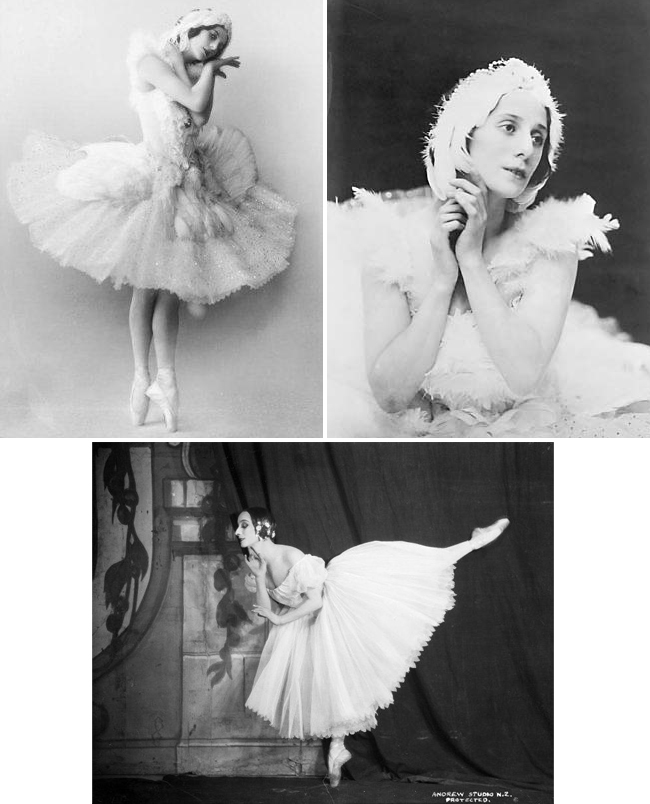
Olga Spesivtseva (1895-1991)
What broke the ballerina's soul most of all - the shocks of the revolution, the accusations of emigration that haunted her as "espionage", the spiritual drama or complete immersion in the image of Giselle, for the sake of which she visited homes for the mentally ill and with whom she shared her madness? She could no longer go on stage and, broken, in 1931 she moved to the USA, where she soon found herself in a hospital in a state of complete loss of memory, where she stayed until 1963. A miracle happened, her memory returned to her and until her death Olga Spesivtseva lived in the boarding house of the Leo Tolstoy Foundation, managing to star in a documentary film...

Agrippina Vaganova (1879-1951)
She did not become a great ballerina, but her name is known throughout the world as the name of a great ballet teacher, which the Academy of Dance bears...
On stage, she was destined for only third-rate roles - she was not attractive in appearance and the first roles bypassed her, and critics did not see her as an “ethereal beauty”. Hard work, talent, and excellent performance technique turned out to be more important than a beautiful outer shell. Agrippina Vaganova “sculpted” herself, initially achieving supporting roles, the images of which she rediscovered for the public. Creating more and more new variations of already seemingly worn-out images, she received from critics the title of “queen of variations.” She didn't famous ballerina, already at the age of 36 she was sent to “retire”, but, devoting herself to choreography, she became the most famous teacher, inscribing her name in golden letters in the history of ballet. She devoted herself to choreography in those years when the issue of... eliminating ballet as an alien art form was being discussed quite seriously. Vaganova school has rightfully become one of the best in the world, producing ballerinas whose names rightfully deserve the prefix “great”: Marina Semenova, Galina Ulanova, Natalya Dudinskaya. Agrippina Vaganova directed Academic theater opera and ballet in 1931-1937, staging “Swan Lake” and “Esmeralda” in a new edition, in his own special manner, called “Vaganova”. Her teaching experience became a worldwide property largely thanks to the book she wrote, “Fundamentals of Classical Dance,” which was translated into almost all languages of the world and went through 7 reprints.
Alicia Alonso (1920)
The creator of the National Ballet of Cuba, Alicia Martinez del Hoyo, at the age of 9, entered the only ballet school in Cuba at that time of the Russian choreographer Nikolai Yavorsky. And from the very first day, ballet became the meaning of her whole life. Step by step, Alicia walked towards her goals, one after another: to become a professional ballerina, and then to create a national ballet school in Cuba. When politics interfered with her plans, and the very existence of a ballet troupe in Cuba became impossible, she made it her goal to support the most gifted dancers until better times. After the victory of the Cuban Revolution in 1959, she selects the most gifted students and sets a new goal - to raise Cuban ballet to a world level. But in her life there were not only large-scale plans, in her life there was the Ballet, of which Alicia called herself a “laborer.” She was applauded by Paris, Milan, Vienna, Naples, Moscow, Prague, but she was never satisfied with herself. At the age of 19, she had her first eye surgery; her vision deteriorated every year, but she danced. “Dancing in the dark” - that’s what they said about the great Cuban ballerina. Especially for her, the center of the stage was illuminated with the brightest spotlight - she did not see the backstage, the scenery, she danced with her soul... A lot of performances, images - she danced, danced, always danced, without giving herself any concessions or discounts for age and loss of vision. Alicia Alonso's last performance in the ballet "Butterfly" staged by her took place in 1995, when the ballerina turned 75 years old! She is still dancing, sitting in wheelchair Having completely lost her sight, she still dances with her hands and heart. Alicia Alonso - Prima ballerina assoluta.
Ballerinas of the 21st century: Evgenia Obraztsova...film "Ballerina"A documentary film that the director filmed for three years about very young 5 Russian ballerinas from Kirov, trying to break into the soloists of the Mariinsky Theater. Bertrand Norman's idea was to show the world of a ballerina from the inside: endless work, pain, and an all-consuming passion for ballet, expressed through dance. The film features a brilliant selection of excerpts from famous productions by Marius Petipa, Mikhail Fokine, Leonid Lavrovsky and George Balanchine.
Tannhäuser: I offer you a new sub-section in Ballet..."Ballerinas of the 21st century"...This page is dedicated to the young and talented ballerina of the Mariinsky Theater Evgenia Obraztsova. You have the opportunity to get acquainted with the training of future ballerinas at the Academy. A. Vaganova. A wonderful film, staged several years ago, also tells about Evgenia Obraztsova. In it you will see the current prima of the Mariinsky Theater and Bolshoi Theater...Diana Vishneva, Svetlana Zakharova, Ulyana Lopatkina...I will not determine the frequency of publication of my subsection...In the mood...As always...)) See you later...
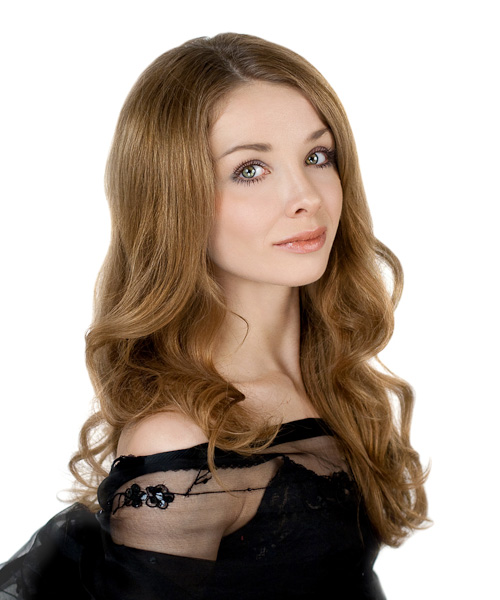
Evgenia OBRAZTSOVA - laureate of numerous international ballet competitions, laureate of the highest theater award in Russia “Golden Mask”.
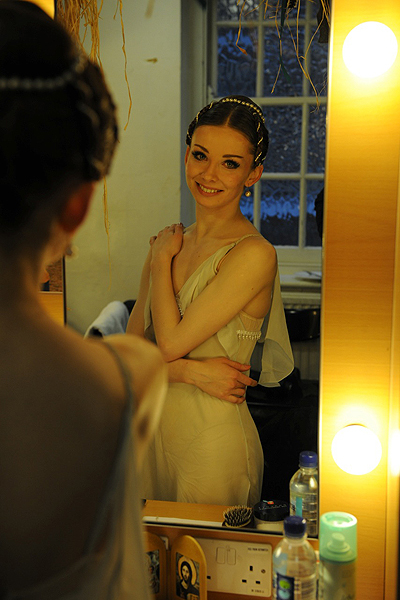
In 2002 she graduated from the Academy of Russian Ballet. A. Ya. Vaganova, first soloist of the Mariinsky Theater, since 2010 - guest soloist of the Moscow Musical Theater. K. S. Stanislavsky and Vl. I. Nemirovich-Danchenko, since 2011 - guest prima ballerina of the Bolshoi Theater, where she made her debut as Kitri with great success. She is a guest soloist at the Rome Opera, Arena di Verona, La Scala, Covent Garden, NBA Ballet (Tokyo), and the Berlin State Opera.

She performed all the leading parts of the repertoire, including La Sylphide (La Sylphide), Giselle (Giselle), La Bayadère (La Bayadère), The Sleeping Beauty (Princess Aurora), The Nutcracker (Masha), Don Quixote ( Kitri), “The Fountain of Bakhchisaray” (Maria), “Romeo and Juliet” (Juliet), “The Legend of Love” (Shirin), “Cinderella” (Cinderella), “The Little Humpbacked Horse” (The Tsar Maiden), “Anna Karenina "(Kitty), "Ondine" (Ondine) (first performer of the part).
1881 in St. Petersburg. The girl was illegitimate, her mother worked as a maid for the famous banker Lazar Polyakov, he is considered the father of the child. The financier himself did not admit his involvement in her birth, but did not object to the girl being recorded as Anna Lazarevna.
Anya’s mother left Polyakov’s house with the child in her arms and settled in the suburbs of St. Petersburg. The girl grew up and developed under the supervision of her mother, who tried in every possible way to instill in her daughter a love of art.
Creative biography of Anna Pavlova
One day my mother took Anya to the Mariinsky Theater. They showed "The Sleeping Beauty" by Pyotr Ilyich Tchaikovsky. With the first sounds of the orchestra, Anya became silent. Then she watched the ballet without stopping, holding her breath, her heart trembling with delight, as if touching something beautiful.
In the second act, boys and girls danced a waltz on stage.
Would you like to dance like this? - Anya’s mother asked during intermission, referring to the corps de ballet dance.
No... I want to dance the way the sleeping beauty did... - the girl answered.
After visiting a fabulous place called the Mariinsky Theater, Anya began to dream of ballet. All conversations in the house from now on were only on the topic of choreographic art, the girl danced in front of the mirror from morning to night, went to bed and got up thinking about ballet. The hobby did not look childish at all; dancing became a part of her life.
The mother, seeing this, took Anya to the ballet school. At that time, the girl was barely eight years old. The teachers advised her to come back in two years, noting Anya’s undoubted abilities. In 1891, the future ballerina was admitted to the St. Petersburg School of Theater Arts in the ballet department.
The studies were Spartan in nature, everything was subject to the strictest discipline, classes lasted eight hours a day. But in 1898 Anna graduated from college with honors. The graduation performance was called “Imaginary Dryads”, in which the girl danced the part of the butler’s daughter.
Anna was immediately accepted into the Mariinsky Theater. Her debut took place in the ballet "Vain Precaution" in pas de trois (dance of three). Two years later, Anna Pavlova danced the main role in the production of “The Pharaoh’s Daughter” to the music of Caesar Pugni. Then the aspiring ballerina performed as Nikia in La Bayadère, which was choreographed by Marius Petipa himself, the patriarch of Russian ballet. In 1903, Pavlova already performed in the title role in the ballet Giselle.
Development
In 1906, Anna was appointed leading dancer of the Mariinsky Theater ballet troupe. It's begun in earnest creative work to search for new forms. Russian ballet required updating, and Pavlova managed to create several images in the spirit of modernity, collaborating with the innovative choreographer Alexander Gorsky, who sought to dramatize the plot and was a staunch supporter of some tragedy in dance.

Anna Pavlova and Mikhail Fokin
At the beginning of the 20th century, Russian ballet was influenced by reform movements. One of the most ardent supporters of radical changes in the art of ballet was the choreographer. He abandoned the traditional separation of dance from pantomime. The next goal of the reformer Fokine was to abolish the use of ready-made forms, movements and combinations. He proposed improvisation in dance as the basis of all ballet art.
Anna Pavlova was the first performer of the main roles in Mikhail Fokin's productions. These were “Egyptian Nights”, “Berenice”, “Chopiniana”, “The Vine”, “Eunice”, “Pavilion of Armida”. But the main result of the collaboration was the ballet “The Dying Swan” to the music of Saint-Saëns, which was destined to become one of the symbols of Russian ballet of the 20th century. The history of the ballerina Pavlova is inextricably linked with this masterpiece of choreography. The ballet scene about the dying swan shocked the whole world.
In December 1907, at one of the charity concerts, Anna Pavlova performed “The Dying Swan”. Composer Camille Saint-Saëns, who was present, was shocked by the interpretation of his music and expressed deep admiration for the talented performance of the miniature. He personally thanked the ballerina for the pleasure she had given, kneeling down and saying: “Thanks to you, I realized that I managed to write wonderful music.”
The best ballerinas on all continents tried to perform the famous ballet miniature. After Anna Pavlova, Maya Plisetskaya succeeded in doing this to the fullest.
Foreign tours
In 1907 the Imperial Mariinsky Theater went abroad. The performances took place in Stockholm. Soon after returning to Russia, Anna Pavlova, a world-famous ballerina, left her native theater, suffering significantly financially, since she had to pay a huge penalty for breaking the contract. However, this did not stop the dancer.

Personal life
Anna Pavlova, a ballerina with extensive creative plans, went to Paris, where she began participating in the Russian Seasons and soon became the star of the project. Then she met Victor Dandre, a great connoisseur of ballet art, who immediately took Anna under his patronage, rented her an apartment in a Parisian suburb, and equipped her with a dance class. However, all this was quite expensive, and Dandre squandered government money, for which he was arrested and put on trial.
Then Pavlova Anna Pavlovna entered into a very expensive but enslaving contract with the London agency "Braff", under the terms of which she had to perform daily, twice a day. The money received helped rescue Victor Dandre from prison, as his debts were paid off. The lovers got married in one of the Parisian Orthodox churches.
Swans in the life of a ballerina
After Pavlova partially worked under a contract with the Braff agency, she created her own ballet troupe and began performing triumphantly in France and Great Britain. Having fully settled with the agency, Anna Pavlova, whose personal life had already been established, settled with Dandre in London. Their home was the Ivy House mansion with a pond nearby where beautiful white swans lived. From now on, Anna Pavlova’s life was inextricably linked with this wonderful house and with noble birds. The ballerina found peace by communicating with the swans.
Further creativity
Pavlova Anna Pavlovna, an active nature, hatched plans in her own way creative development. Her husband, fortunately, suddenly discovered an ability to produce and began promoting his wife’s career. He became the official impresario of Anna Pavlova, and the great ballerina no longer had to worry about her future; it was in good hands.
In 1913 and 1914, the dancer performed in Moscow and St. Petersburg, including the Mariinsky Theater, where she danced the role of Nikiya for the last time. In Moscow, Anna Pavlova appeared on the stage of the Mirror Theater in the Hermitage Garden. After this performance, she went on a long tour of Europe. This was followed by months of tours in the USA, Brazil, Chile and Argentina. Then, after a short break, Dandre organized a tour of Australia and Asian countries.
Commitment to reform
Even in the first years of work at the Mariinsky Theater, after graduating from college, Anna Pavlova sensed the potential for changing established canons in ballet art. The young ballerina felt an urgent need for change. It seemed to her that choreography could be expanded and enriched through new forms. The classics of the genre seemed to be something outdated, requiring a radical update.
While rehearsing her role in “A Vain Precaution,” Pavlova suggested that Marius Petipa take a revolutionary step and replace the short crinoline skirt with a long, tight-fitting tunic, while referring to the famous Maria Taglioni, a representative of the ballet of the Romantic era, who introduced the ballet tutu and pointe shoes into use, and then she abandoned the short skirt in favor of flowing clothes.
Choreographer Petipa listened to Anna's opinion, they changed her clothes, and Marius watched the dance from beginning to end. After that, it became an attribute of performances like “Swan Lake,” where a short skirt was appropriate for the style of the production. Many considered the introduction of the tunic as the main type of ballet clothing to be a violation of the canons, but nevertheless, the ballerina’s long, flowing clothing was later noted in the art of ballet costume as a necessary part of the performance.
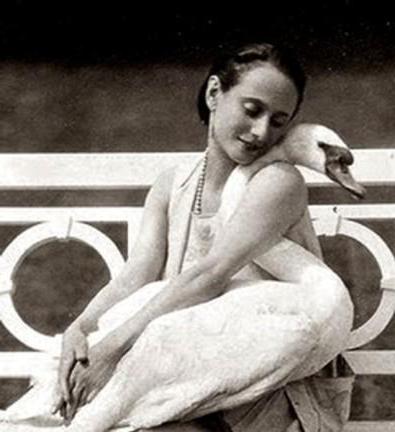
Creativity and controversy
Anna Pavlova herself called herself a pioneer and reformer. She was proud that she had managed to give up the "tu-tu" (crinoline skirt) and dress more appropriately. She had to argue for a long time with connoisseurs of traditional ballet and prove that the ballet tutu is not suitable for all performances. And that theatrical costumes should be selected in accordance with what is happening on stage, and not to please the classical canons.
Pavlova's opponents argued that open legs were primarily a demonstration of dance technique. Anna agreed, but at the same time spoke out for greater freedom in choosing a costume. She believed that crinoline had long become an academic attribute and was not at all conducive to creativity. Formally, both sides were right, but they decided to leave the last word to the public.

Anna Pavlova regretted only one drawback of long clothes - the tunic deprived the ballerina of her “frailty.” She came up with this word herself; the term meant that the folds constrained the flying movements of the body, or rather, they hid the flight itself. But then Anna learned to use this flaw. The ballerina invited her partner to throw her a little higher than usual, and everything fell into place. The required freedom of movement and grace appeared in the dance.
Serge Lifar: impressions
“I have never seen such divine lightness, weightless airiness and such graceful movements.” This is what the largest French choreographer Serge Lifar wrote about his meeting with the Russian ballerina Anna Pavlova.
“From the first minute I was captivated by the nature of her plasticity, she danced as if she were breathing, easily and naturally. There was no desire for proper ballet, fouetté, or virtuoso tricks. Only the natural beauty of natural body movements and airiness, airiness...”
“I saw in Pavlova not a ballerina, but a genius of dance. She raised me from the ground up, I could neither reason nor evaluate. There were no shortcomings, just as a deity cannot have them.”
Touring and statistics
Anna Pavlova led an active touring life for 22 years. During this period, she took part in nine thousand performances, two thirds of which were performed in the main roles. Moving from city to city, the ballerina traveled at least 500 thousand kilometers by train. An Italian ballet shoe maker sewed two thousand pairs of pointe shoes a year for Anna Pavlova.
In between tours, the ballerina rested with her husband in her house, among tame swans, in the shade of trees, near a still clean pond. On one of these visits, Dandre invited the famous photographer Lafayette, and he took a series of photographs of Anna Pavlova with her favorite swan. Today these photographs are perceived as a memory of the great ballerina of the 20th century.
In Australia, in honor of the Russian ballerina Anna Pavlova, it was invented from exotic fruits with the addition of meringue. By the way, New Zealanders claim that they created the fruit treat.
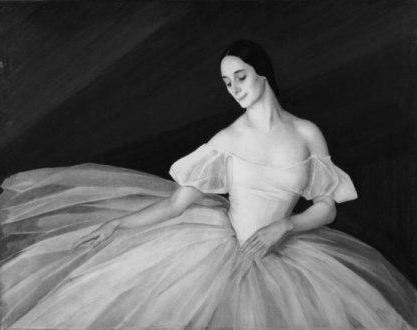
Once Anna Pavlova danced on the theater stage the popular Mexican folk dance “jarabe tapatio”, which means “dance with a hat”, in her interpretation. Enthusiastic Mexicans threw hats at the ballerina and the entire stage. And in 1924, this dance was declared the national dance of the Mexican Republic.
In China, Anna Pavlova surprised the audience by dancing 37 fouettés non-stop on a small platform mounted on the back of an elephant walking across the field.
Dutch flower growers grew a special variety of snow-white tulips, which received the name great ballerina Anna Pavlova. Graceful flowers on thin stems symbolize grace.
Several different monuments dedicated to the ballerina were erected in London. Each of them relates to a certain period of her life. Three monuments are erected near the Ivy House, where Pavlova lived most of her life.
Anna was distinguished by a rare love of humanity, she was involved in charity work, and opened several orphanages and shelters for homeless children. Girls and boys from the guests of these institutions who had the ability to dance were selected and sent to the school of children's choreography, opened in the Ivy House.
A separate act of Anna Pavlova’s charity was her assistance to the starving people of the Volga region. In addition, on her behalf, parcels were regularly sent to the St. Petersburg Ballet School.
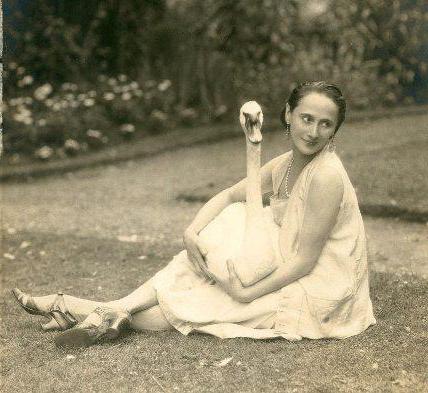
The death of a great dancer
Anna Pavlova died of pneumonia on January 23, 1931 in the city of The Hague, during a tour. The ballerina caught a cold during a rehearsal in a cold hall. Her ashes are in the Golders Green Columbarium in London. The urn is located next to the remains of her husband Victor Dandre.
Film created in memory of Anna Pavlova
The life and fate of the world-famous ballerina was reflected in a five-part television film, based on the script by Emil Loteanu.
The film story tells about the short but eventful life of the great ballerina and wonderful person according to Pavlova. 1983, the time the series was released, was the year of the 102nd anniversary of the dancer’s birth. The film features many characters, and the role of Pavlova was played by the actress









